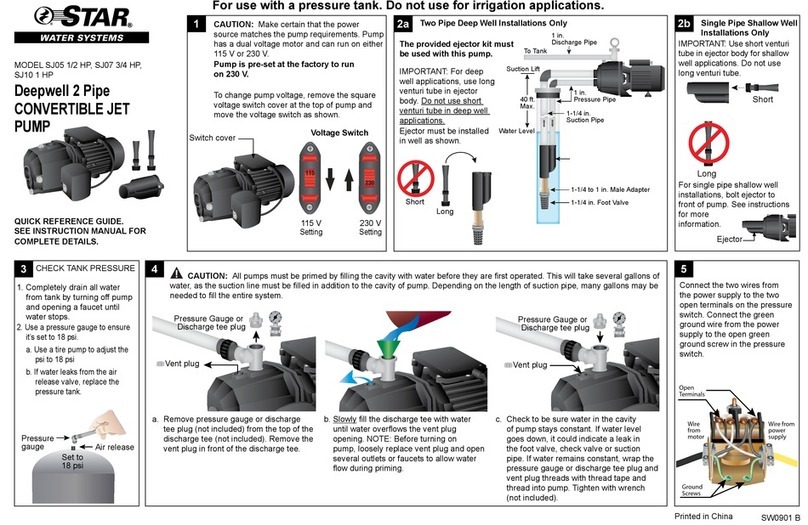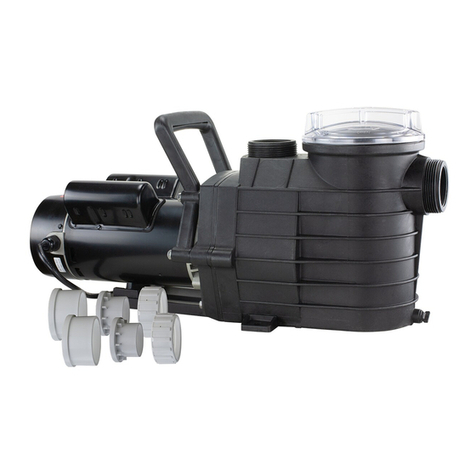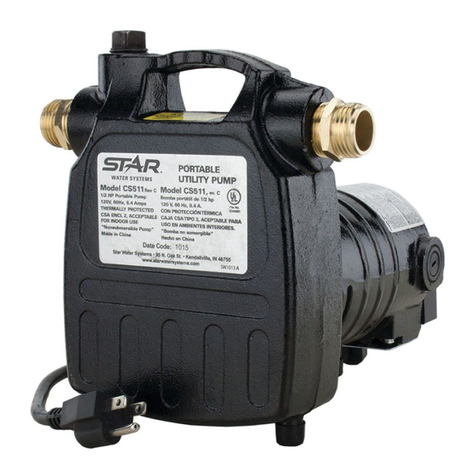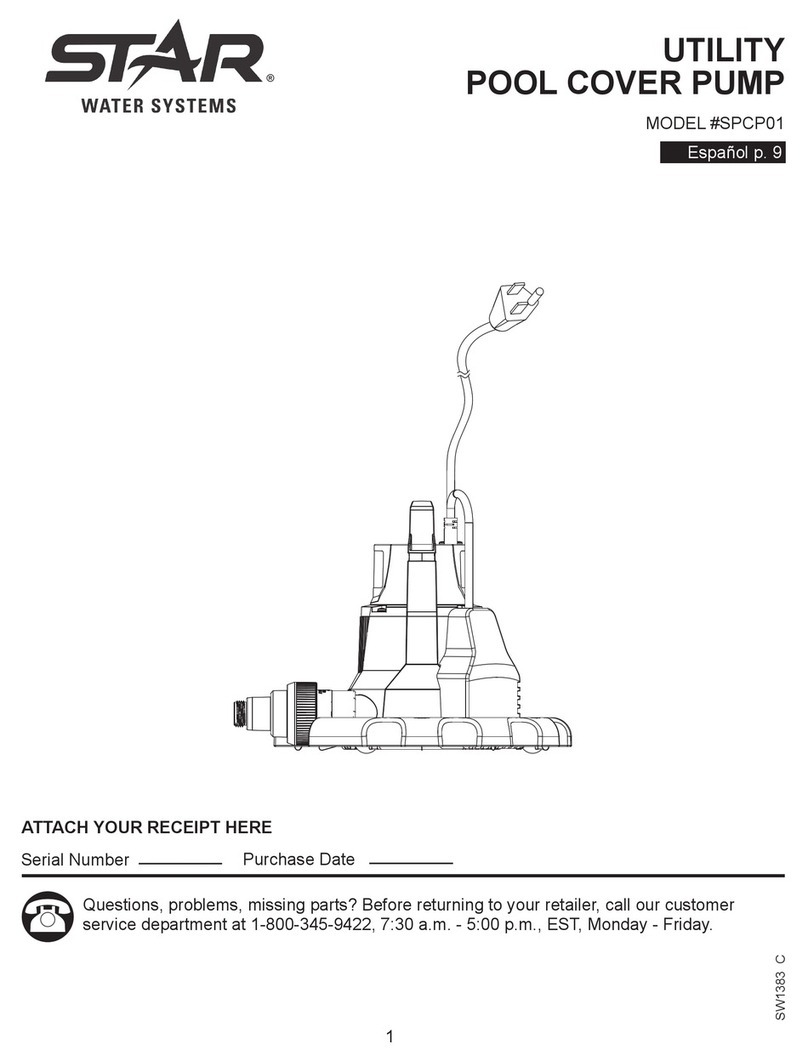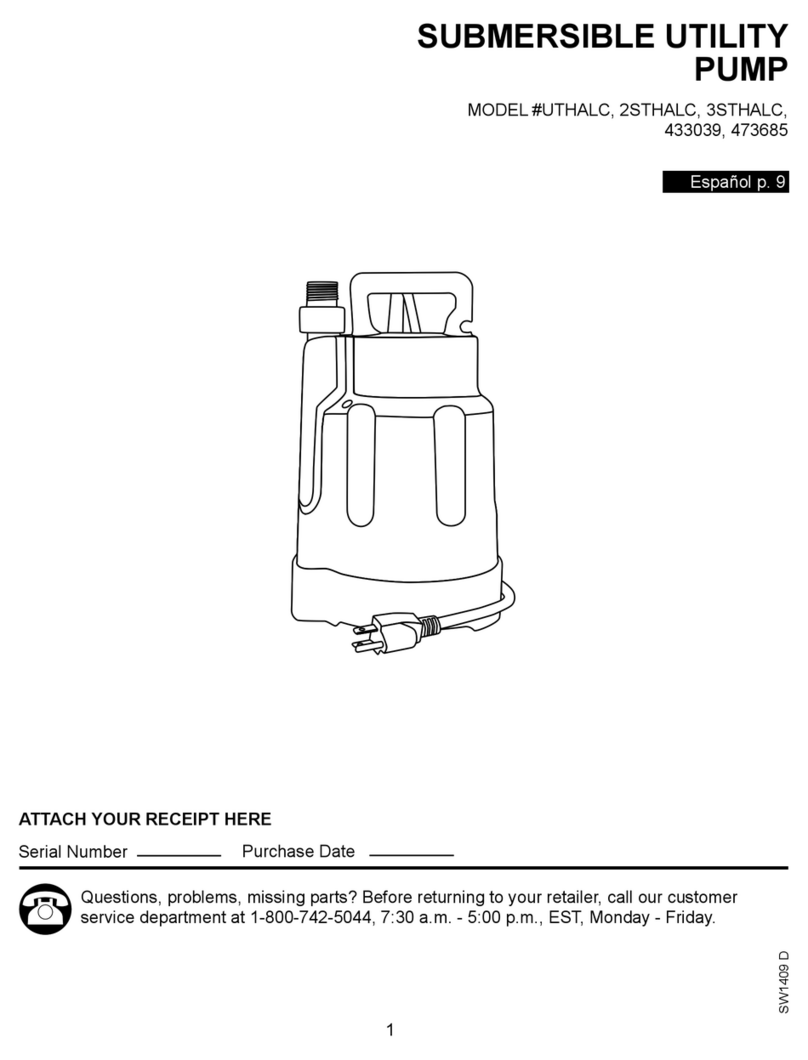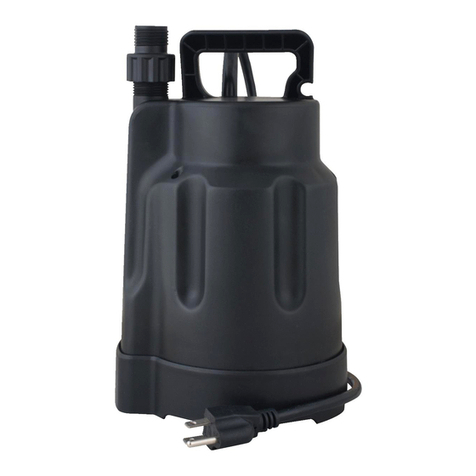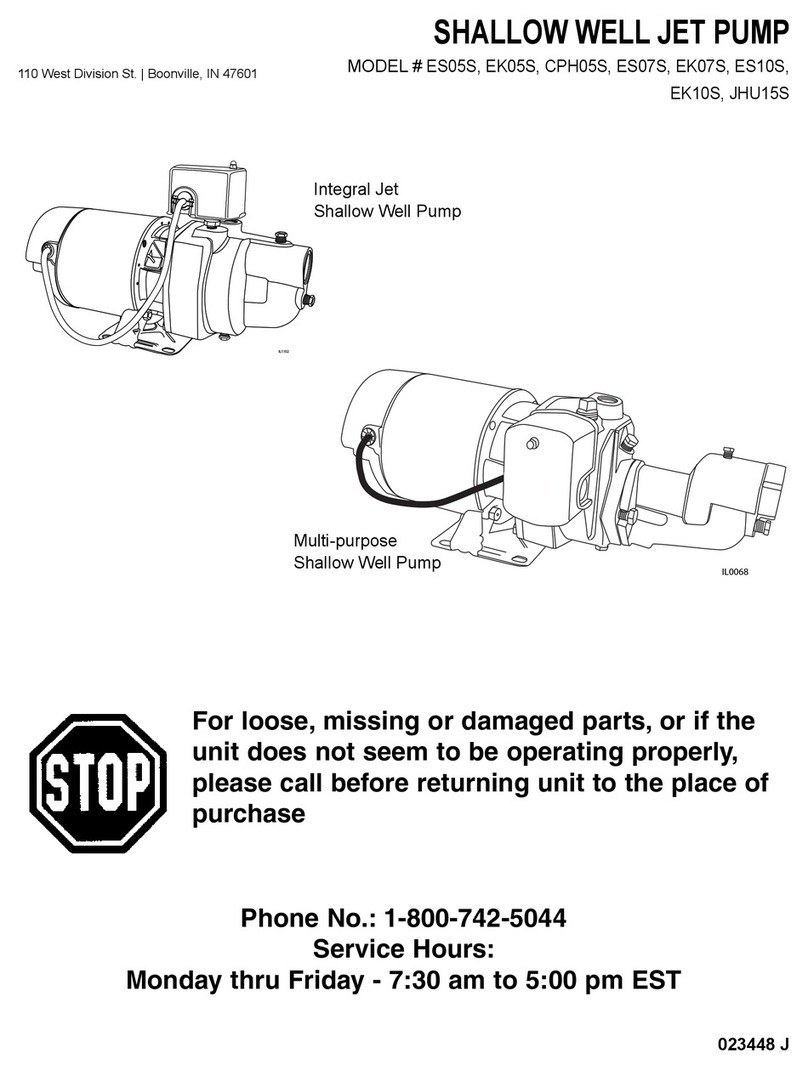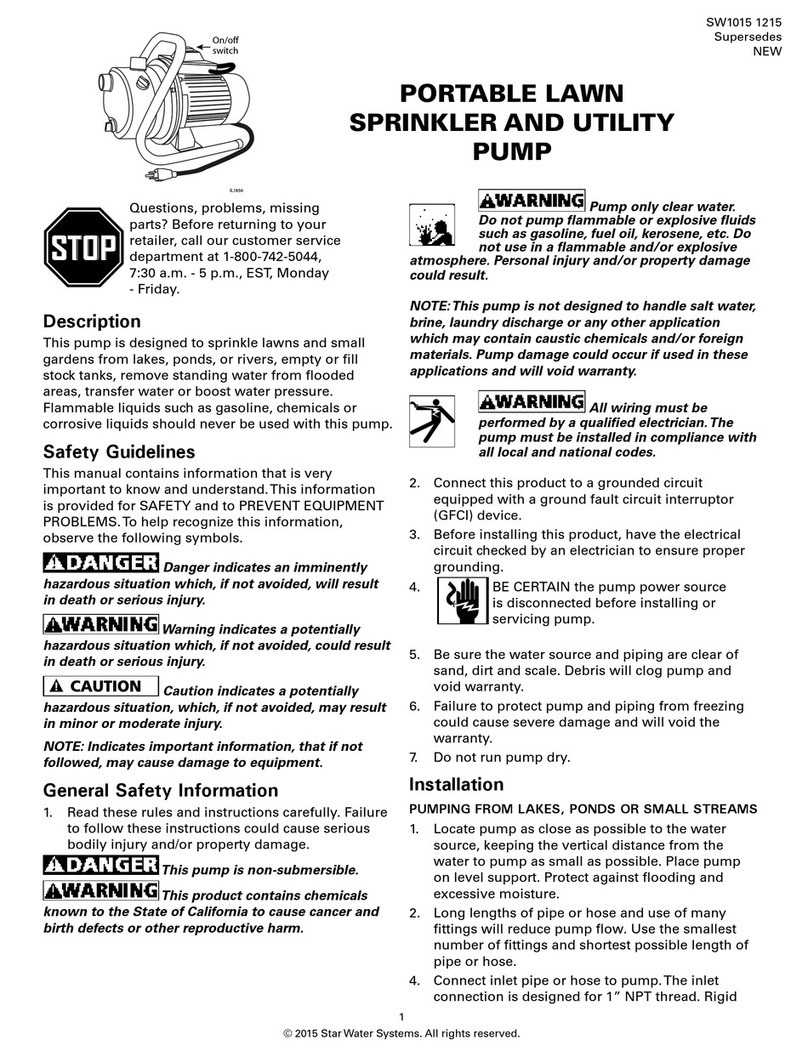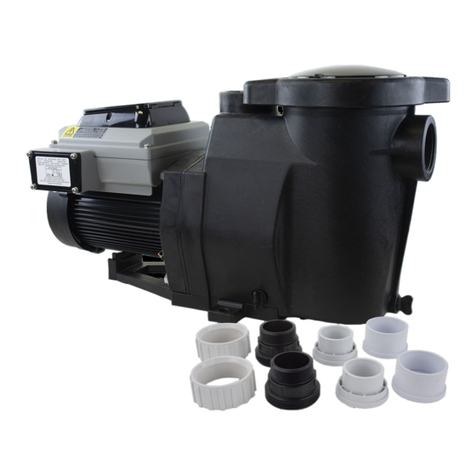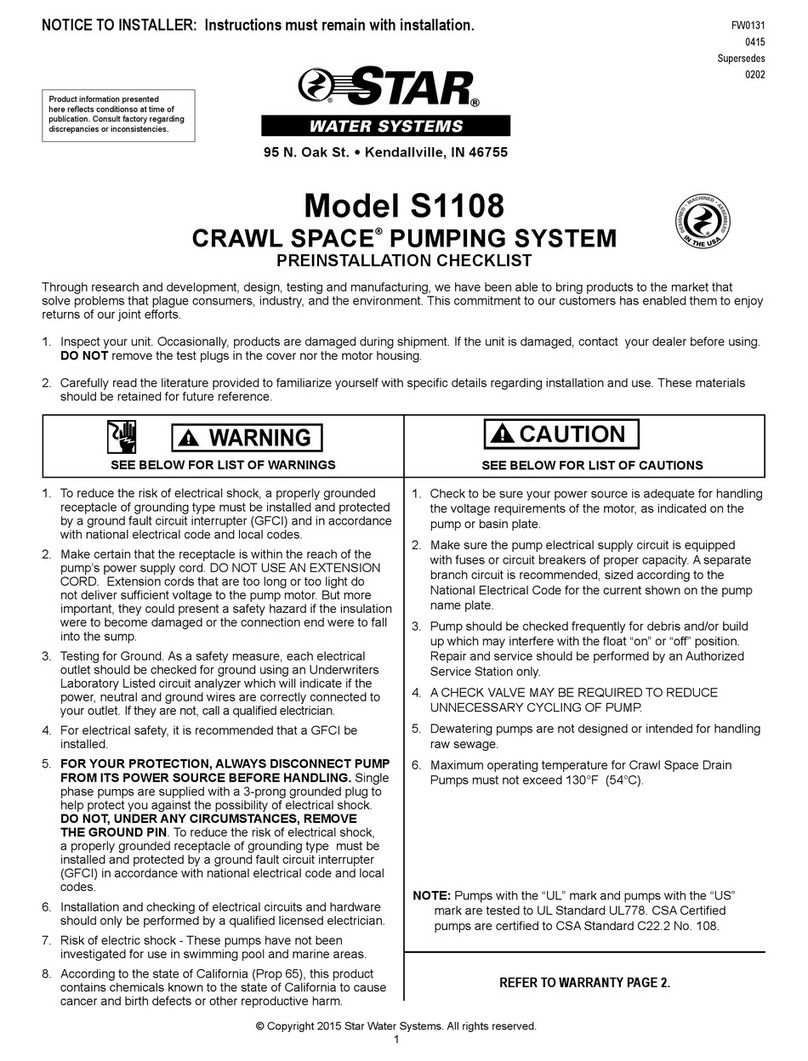
4
© 2021. All rights reserved.
5
© 2021. All rights reserved.
INSTALLATION INSTRUCTIONS Continued
2. Flush piping with water before connecting the
hydrant to clear any gravel or other debris
that may have collected in the piping during
installation and assembly. If not ushed
thoroughly, this debris may jam the hydrant
mechanism or clog the ow ports.
3. Make the pipe connection, but do not bury
the hydrant at this time. Operate the hydrant
to be sure it functions properly and the pipe
connections do not leak. Open and close the
hydrant and check the ow and draining. If
leaks continue from the drain port, see the
following section on HOW TO ADJUST THE
FROST-PROOF YARD HYDRANT.
3
2
Water pressure requirements
Water supply pressure to the hydrant should be regulated at no more than 80 PSI. Higher pressures
will accelerate wear and may cause leakage that will saturate the ground and drain field and prevent
the hydrant from draining. If the hydrant is not allowed to drain, it can freeze and become damaged.
It might also cause flooding and loss of water. High pressure will also cause frequent hydrant
adjustments and lead to increased need for replacement parts. A normal operating pressure should
be 20 to 60 PSI.
NOTE: For installations on a municipal system, you must use a vacuum breaker or backflow device in
accordance with local plumbing codes.
Pipe requirements
160# PSI test pipe is recommended for municipal applications. For most other applications, 100# PSI
plastic coil pipe is recommended.
Drain eld requirements
Saturated ground in the hydrant drain field can prevent the hydrant from draining and may result in
freezing. If the area where the hydrant is located is low lying or has a tendency to collect standing
water, a larger drain field or pit may be required to provide proper draining.
GENERAL INFORMATION
1/8 IN.
DRAINAGE PIPE
WATER SUPPLY
CAUTION: Never leave a hose attached to the hydrant after use. The hose will prevent the hydrant
from draining properly and cause the hydrant to freeze in cold weather. Leaving the hose attached
might also siphon contaminants back into the water system.
Installing hydrant in a building or in asphalt or concrete
If the hydrant will be installed inside a barn or other
structure, or if it is installed in asphalt or concrete such
as a driveway, connect a 1/8” drain pipe or tube to
the drain port and dig a remote drain field outside the
structure for the drain pipe to empty into. Without this
remote piping and drain field, the water from the hydrant
drainage will percolate up to the surface around or near
the hydrant and will damage the flooring or cause muddy
areas in stalls or walkways.
INSTALLATION INSTRUCTIONS
1. Locate the hydrant away from any septic
systems or vehicle trac and convenient for
stock or other watering purposes. Dig a hole for
the hydrant approximately 2 ft. in diameter and
1 ft. deeper than the bury depth.
NOTE: It is helpful to place a brick or cinder block
under the hydrant to support the hydrant and pipe
when the ground settles.
Be sure the total depth of the hole is sucient to
allow the brass valve to be installed below the frost
line. (See local plumbing codes.)
BURY
DEPTH
WATER
SUPPLY
2 FT.
1 FT.
APPROX.
24 IN.
14. Set the hydrant in the hold vertically and ll
the hole around and below the hydrant with
medium size gravel. This will provide a drain
eld for the hydrant. Without a drain eld, the
hydrant will not empty itself and it will freeze
in cold weather. This will damage the hydrant
and cause loss of water and possible ooding
damage.
NOTE: For additional support, install a 4x4 post
next to the hydrant and clamp the pipe to the
post to help keep the hydrant level.
4x4
POST
GRAVEL
4


















